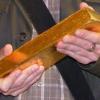Skeletal muscle mitochondria as a target to prevent or treat type 2 diabetes mellitus
Matthijs K. C. Hesselink, Vera Schrauwen-Hinderling & Patrick Schrauwen
AffiliationsContributionsCorresponding author
Nature Reviews Endocrinology (2016) doi:10.1038/nrendo.2016.104
Published online 22 July 2016
Abstract
Low levels of physical activity and the presence of obesity are associated with mitochondrial dysfunction. In addition, mitochondrial dysfunction has been associated with the development of insulin resistance and type 2 diabetes mellitus (T2DM). Although the evidence for a causal relationship between mitochondrial function and insulin resistance is still weak, emerging evidence indicates that boosting mitochondrial function might be beneficial to patient health. Exercise training is probably the most recognized promoter of mitochondrial function and insulin sensitivity and hence is still regarded as the best strategy to prevent and treat T2DM. Animal data, however, have revealed several new insights into the regulation of mitochondrial metabolism, and novel targets for interventions to boost mitochondrial function have emerged. Importantly, many of these targets seem to be regulated by factors such as nutrition, ambient temperature and circadian rhythms, which provides a basis for nonpharmacological strategies to prevent or treat T2DM in humans. Here, we will review the current evidence that mitochondrial function can be targeted therapeutically to improve insulin sensitivity and to prevent T2DM, focusing mainly on human intervention studies.
In a more direct way to affect mitochondrial meta- bolism, NAD+ levels could be increased by supplementation of the natural NAD+ precursor
nicotinamide riboside. In mice, this approach resulted in improved oxidative capacity and alleviation of high-fat-diet-induced metabolic aberrations116, and both prevented and reverted development of nonalcoholic fatty liver disease in mice via induction of an imbalance in mitochondrial-encoded proteins compared with nuclear-encoded mitochondrial proteins in a SIRT1 and SIRT3-dependent manner117. The likelihood that
nicotinamide riboside supplementation is also beneficial for humans was underscored by a 2015 paper that reported ex vivo
nicotinamide riboside treatment of peripheral blood mononuclear cells from healthy volunteers, which revealed increased mitochondrial respiratory capacity, increased antioxidant capacity and reduced mitochondrial ROS production upon
nicotinamide riboside treatment118. Furthermore, using an indirect approach, our group showed that boosting NAD+ levels via the NAD+ precursor acipimox robustly induced an imbalance in mitochondrial-encoded and nuclear-encoded mitochondrial proteins and improved muscle mitochondrial respiration in patients with T2DM119. Clearly, more human intervention studies are needed to reveal the true potential of targeting the AMPK–NAD+– SIRT1 pathway (FIG. 3) to improve insulin sensitivity, but the data available so far are certainly promising.
Conclusion and future perspectives
The association between mitochondrial function and insulin sensitivity has been well established and ample evidence exists that boosting mitochondrial function improves whole-body and skeletal muscle insulin sen- sitivity and glucose homeostasis, at least in mice and rats. Albeit more limited in number than animal model studies, most human studies also provide compelling evidence that therapeutically targeting mitochondria to improve insulin sensitivity is a promising route. Importantly, mitochondria are central in the regulation of human cellular metabolism and cells relevant to meta- bolic control are equipped with robust regulatory path- ways enabling them to adapt mitochondrial metabolism to cellular conditions and demands. These findings identify mitochondria as targets for pharmacological or exercise interventions to treat T2DM, and also suggest that these organelles can be manipulated by lifestyle factors such as nutrition, environmental temperature and circadian rhythms. Despite the abundance of animal data, mechanistic human clinical intervention studies to target the diverse aspects of mitochondrial function in the treatment or prevention of T2DM are still limited, but urgently awaited.
































 This topic is locked
This topic is locked




















